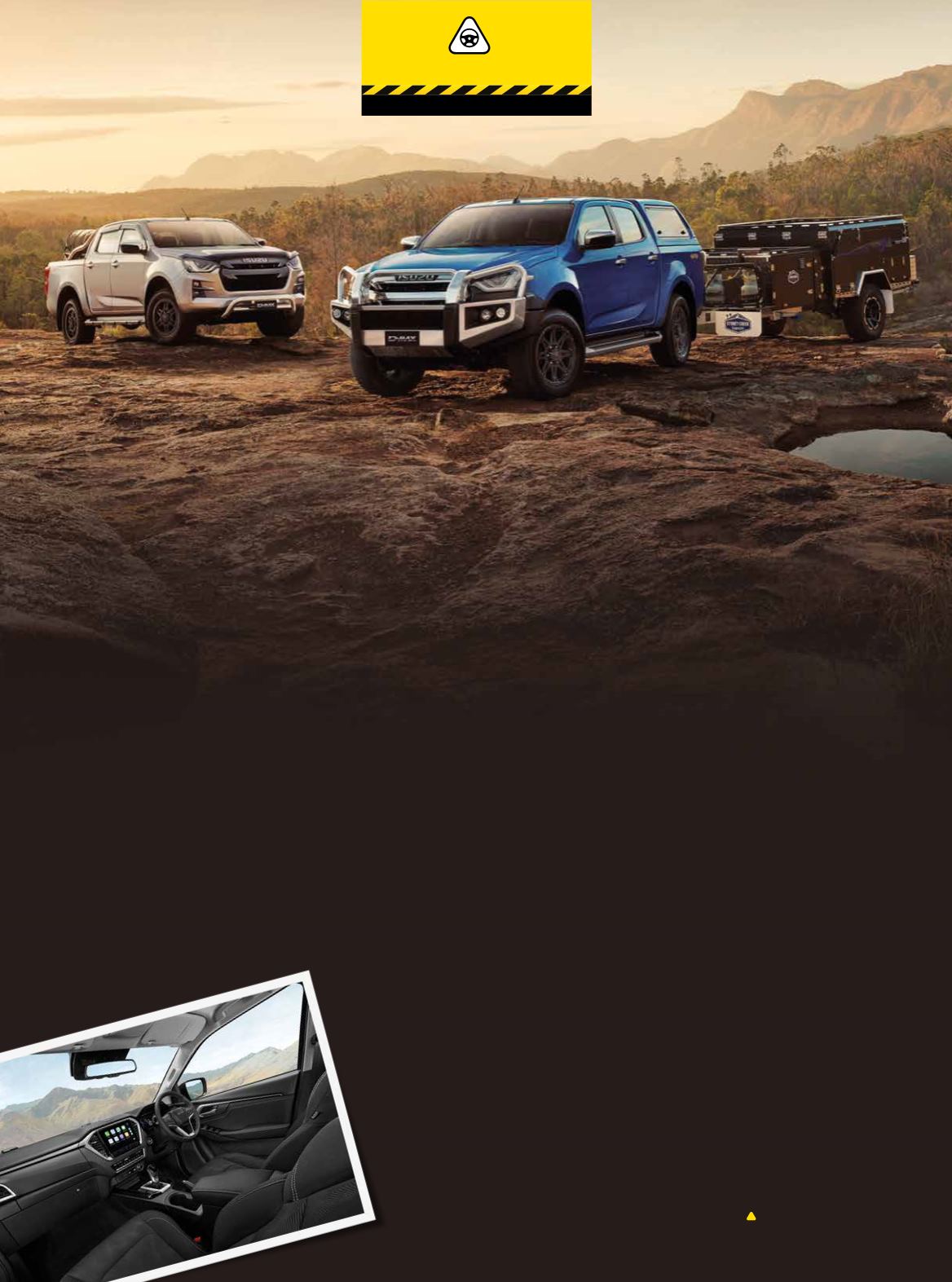

W
ith months-long waiting lists
for some of its more popular
variants, the Isuzu D-Max
is one of Australia’s favourite utes –
particularly in the trades-oriented 4x2
utility category. In the 4x4 category
it’s still on the finishing podium, with a
solid third place behind the dominant
Ford Ranger and Toyota Hilux, but
new arrivals to the D-Max lineup could
strengthen Isuzu’s pull with ute buyers
and close the gap.
Fleet operators will be most
interested in a new offering at the
bottom end of the D-Max family, with
a new 1.9L turbo diesel engine taking
over as the entry-level member of the
ISUZU D-MAX RANGE
STRENGTHENED BY NEW 1.9L
DIESEL BASE MODEL
bunch. Available only as a 4x2 cab
chassis, with a choice of manual or
automatic transmission, the D-Max SX
1.9L produces 110kW and 350Nm and
has been designed with durability and
lower operating costs in mind.
It’s a step down in power and torque
versus the 140kW/450Nm 3.0L turbo
diesel inline four of the previous entry-
spec D-Max SX 4x2, but with that
variant jumping in price from $29,990
drive-away to $33,200 before on-
roads, the new 1.9L (which takes over
that $29,990 drive-away price tag as
a manual) does at least allow Isuzu to
preserve a keen sub-$30K entry point.
Strip away the drive-away incentive,
and regular retail pricing is $ 31,200
for the 1.9L manual, or $33,200 for the
1.9L auto.
Beyond purchase price, there is
another advantage to the 1.9L D-Max
SX: payload. Rated to carry up to
1,405kg as a manual or 1,380kg for
the automatic, the 1.9L boasts a
fair payload advantage against
its 3.0L equivalent, which is
rated for 1,305kg and 1,300kg
for the manual and automatic
respectively.
That advantage gets flipped
when it comes to towing. Only rated
to lug 2,800kg on a braked trailer
with the manual or 3,000kg with the
auto, the D-Max SX 1.9L lives in the
shadow of the 3.0L’s 3,500kg max tow
capability. Fuel economy is a claimed
7.0L/100km – just 0.2L/100km less
than the equivalent 3.0L’s average
figure. As for service costs, the smaller
engine comes out slightly ahead with
scheduled maintenance over seven
years tallying at $3,223 - $300 less
than the 3.0L.
The higher-grade LS-M crew cab
chassis and LS-U crew cab chassis
provide an extra row of seats as well
as a longer list of standard equipment,
and are new to the range for 2022,
priced at $52,800 and $58,200
respectively and only available as 4x4
automatics with the 3.0L engine.
Want even more? Leather upholstery,
power-heated seats (power-
adjustable), and a leather-upholstered
steering wheel set the ‘plus’ apart from
the regular LS-U grade, adding to the
9” infotainment package, premium
eight-speaker audio, dual-zone air
conditioning, keyless entry and
ignition, switchable 4x4 and locking
rear differential.
TRANSPORT
with Tony O’Kane
















